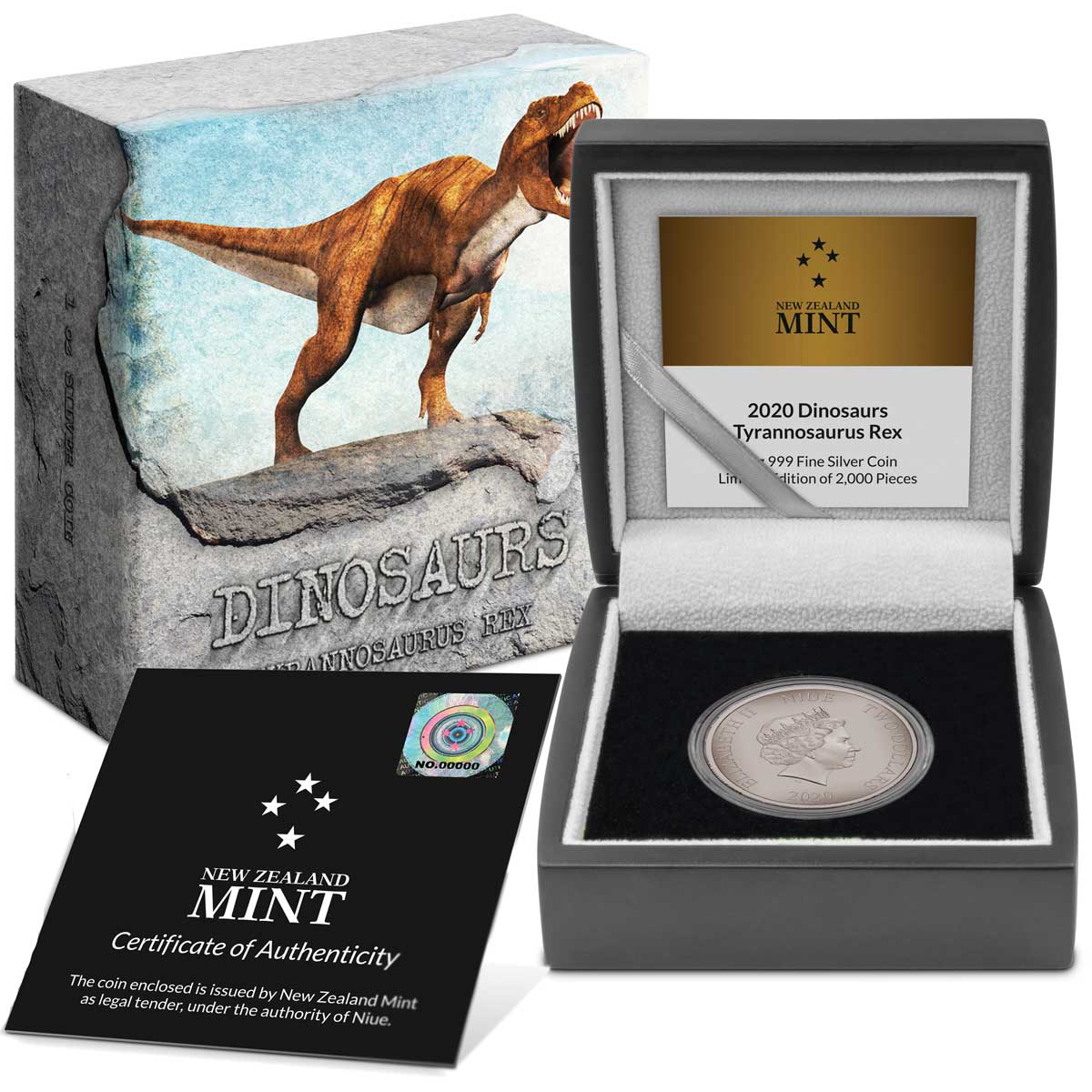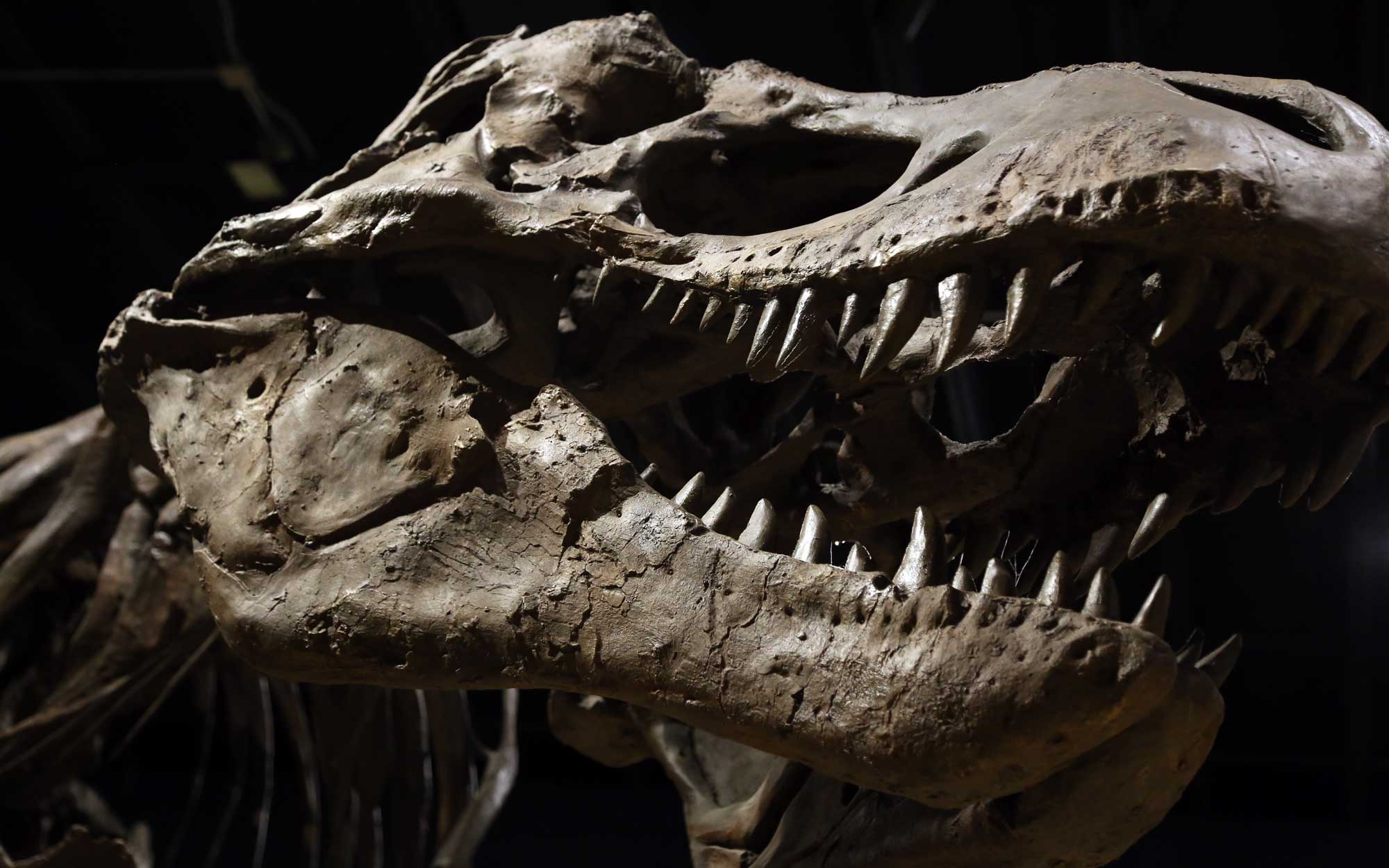The king of the dinosaurs, the Tyrant Lizard itself, stars on Niue’s new prehistoric coin series
We love a prehistoric coin here, but they come along so rarely these days we’d almost think an asteroid had landed on Mintsville. Fortunately, and with an incredible piece of lucky timing, the New Zealand Mint has launched the first of its new ‘Dinosaurs’ series, and started off with the big bad of the Cretaceous, Tyrannosaurus Rex itself, the fabled Tyrant Lizard.
Why is this lucky timing? Just a few hours before we wrote this article, the first new Tyrannosaurid species to be discovered in Alberta for fifty years was announced. Called Thanatotheristes, it is the oldest species of Tyrannosaurid yet found in the region and just shy of 80 mya. Its name means “Reaper of Death”, about as subtle as a brick to the forehead, but probably quite apt. At 12m in length, it didn’t quite hit T.Rex levels of heft, but it was still large enough to ruin the day of anything it fancied a nibble on.
The coin is of a format this Antipodean mint has plenty of experience with. A one-ounce, antique-finished silver coin with selective colouring on the reverse is something they had plenty of success with, using it on their Warriors of History, and Battles That Changed History ranges. The antique finish and muted colour pattern are a good match for the subject, and the image is a good one, complete with appropriate background.
A nice themed box with the new-style hologram-adorned Certificate of Authenticity completes the package. The NZ Mint usually issues series like these over the space of a year or two, rather than just a single annual issue, so we’d expect to see at least two more of these through 2020, possibly as many as four. At $80.00 USD, they’re relatively affordable for the casual collector. Available today.
TYRANNOSAURUS
Tyrannosaurus is a genus of coelurosaurian theropod dinosaur. The species Tyrannosaurus rex (rex meaning “king” in Latin), is one of the most well-represented of the large theropods. Tyrannosaurus lived throughout what is now western North America, on what was then an island continent known as Laramidia. Tyrannosaurus had a much wider range than other tyrannosaurids. Fossils are found in a variety of rock formations dating to the Maastrichtian age of the upper Cretaceous Period, 68 to 66 million years ago. It was the last known member of the tyrannosaurids, and among the last non-avian dinosaurs to exist before the Cretaceous–Paleogene extinction event.
Like other tyrannosaurids, Tyrannosaurus was a bipedal carnivore with a massive skull balanced by a long, heavy tail. Relative to its large and powerful hind limbs, Tyrannosaurus forelimbs were short but unusually powerful for their size and had two clawed digits. The most complete specimen measures up to 12.3 m in length though T. rex could grow to lengths of over 12.3 m, up to 3.66 meters tall at the hips, and according to most modern estimates 8.4 metric tons to 14 metric tons in weight. Although other theropods rivalled or exceeded Tyrannosaurus Rex in size, it is still among the largest known land predators and is estimated to have exerted the strongest bite force among all terrestrial animals. By far the largest carnivore in its environment, Tyrannosaurus Rex was most likely an apex predator, preying upon hadrosaurs, armoured herbivores like ceratopsians and ankylosaurs, and possibly sauropods. Some experts have suggested the dinosaur was primarily a scavenger. The question of whether Tyrannosaurus was an apex predator or a pure scavenger was among the longest debates in palaeontology. Most palaeontologists today accept that Tyrannosaurus was both an active predator and a scavenger.
More than fifty major specimens of Tyrannosaurus Rex have been identified, some of which are nearly complete skeletons. Soft tissue and proteins have been reported in at least one of these specimens. The abundance of fossil material has allowed significant research into many aspects of its biology, including its life history and biomechanics. The feeding habits, physiology and potential speed of Tyrannosaurus rex are a few subjects of debate. Its taxonomy is also controversial, as some scientists consider Tarbosaurus Bataar from Asia to be a second Tyrannosaurus species while others maintain Tarbosaurus is a separate genus. Several other genera of North American tyrannosaurids have also been synonymised with Tyrannosaurus.
As the archetypal theropod, Tyrannosaurus has been one of the best-known dinosaurs since the early 20th century, and has been featured in film, advertising, postal stamps, and many other media.(WIKIPEDIA)
| SPECIFICATION | |
| DENOMINATION | $2 NZD (Niue) |
| COMPOSITION | 0.999 silver |
| WEIGHT | 31.1 grams |
| DIMENSIONS | 40.0 mm |
| FINISH | Antique |
| MODIFICATIONS | Colour |
| MINTAGE | 2,000 |
| BOX / C.O.A. | Yes / Yes |






Leave A Comment